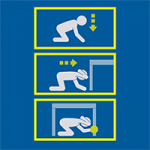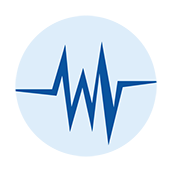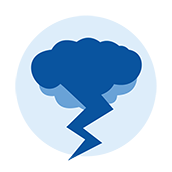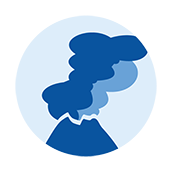EarthquakesNgā Rū Whenua
All of New Zealand is at risk of earthquakes. We can’t predict when one will happen, but we can protect ourselves and our whānau. Find out what to do before, during and after an earthquake.
On this page
Remember: Drop, Cover and Hold
(The words ‘When an earthquake happens’ are floating on screen. But a sudden shaking breaks them and they fall to the ground.)
When an earthquake happens, immediately Drop Cover Hold.
(A figure quickly crawls under a table as the words Drop Cover Hold appear above them. The figure covers their head and neck with their hands. They reach out with one hand to grab a table leg.)
Drop so you don’t get knocked off your feet.
(A figure is in the center of the screen with the word Drop floating next to them. They drop down to their hands as a rumbling noise starts.)
Cover your head and neck.
(The figure covers their head and neck with their hands. The words ‘Protect head, neck and vital organs’ appears above them.)
Get under a desk or a table if you can.
(A table appears next to the figure and they crawl under it, still covering their neck with one of their hands. As they get under the table and cover their head again, large blocks crash onto the table. The words ‘Be a smaller target for falling objects’ appears above the table.)
And hold until after the shaking stops.
(As the blocks fall to the floor, the figure reaches out to grab a table leg. The words ‘No table? Hold your head and neck’ appear above the table.)
(The Civil Defence logo appears on screen. The url www.civildefence.govt.nz appears underneath)
Remember: Drop, Cover and Hold
In an earthquake Drop, Cover and Hold.
Drop down on your hands and knees. Cover your head and neck. Hold on to your shelter.
Reduce the impacts of earthquakes
Make your home safer. Fix and fasten objects that could fall and hurt you in an earthquake.
Review your insurance regularly. Having insurance cover for your home and contents is important to help you get back on your feet if you suffer damage in a disaster.

Visit the Toka Tū Ake Earthquake Commission website for more information on making your home safer.

We can't predict disasters, but we can prepare for them. One of the best places to start is with your home. Find out what you can do to make your home safer.
Get ready before an earthquake
Work out what supplies you might need and make a plan together.
Practise Drop, Cover and Hold at least twice a year. You can do this when the clocks change and by taking part in New Zealand ShakeOut. It's important to practise the right action to take so that when a real earthquake happens, you know what to do.
Identify safe spaces to Drop, Cover and Hold(external link) within your home, school, work and other places you often visit.
- Somewhere close to you, no more than a few steps away, to avoid injury from flying debris.
- Under a strong table. Hold on to the table legs to keep it from moving away from you.
- Away from windows that can shatter and cause injury. And from tall furniture that can fall on you. Protect your head and neck with your arms.
- Not in a doorway. In most homes, doorways are not stronger than any other part of a house and a swinging door can cause more injury.

Visit the Toka Tū Ake Earthquake Commission website for more information on making your home safer.

In an emergency, you may be stuck at home for three days or more. Your house is already full of emergency items disguised as everyday things. Figure out what supplies you need and make a plan to get through.
What to do during an earthquake
Drop, Cover and Hold is the right action to take in an earthquake. It:
- stops you being knocked over
- makes you a smaller target for falling and flying objects, and
- protects your head, neck and vital organs.
Do not run outside or you risk getting hit by falling bricks and glass.
If you are near the coast remember, Long or Strong, Get Gone(external link).
- Drop, Cover and Hold until the shaking is over.
- If the earthquake lasts longer than a minute or is strong enough to make it difficult to stand, move quickly to the nearest high ground or as far inland as you can out of tsunami evacuation zones.
- Find out more about how to protect yourself from a tsunami.(external link)

Learn why Drop, Cover and Hold is the right action to take in an earthquake.

Download and print these posters in English on what to do in an earthquake. Put them up in your home, school, work or community space. Remember to Drop, Cover and Hold in an earthquake. If you use a walker or wheelchair, Lock, Cover and Hold.
pdf | 102 KB

Me tikiake ka tā i ēnei pānui i roto i te reo Māori ka whakairi ki tō kāinga, kura, wāhi mahi rānei. Kia maumahara, Pāheke, Hīpoki, Pupuri ina pā mai he rū.
Download and print these posters in te reo Māori on what to do in an earthquake. Put them up in your home, school, work or community space. Remember to Drop, Cover and Hold in an earthquake.

Download and share this factsheet on what to do before, during and after an earthquake.

Tīkina ake, tiria hoki tēnei pukameka mō ngā mahi me whakamahi ā mua, ā roto, ā muri hoki i tētahi rū whenua.
Download and share this factsheet on what to do before, during and after an earthquake.
Drop, Cover and Hold
In an earthquake Drop, Cover and Hold.
Drop down on your hands and knees. Cover your head and neck. Hold on to your shelter.
Learn how to Drop, Cover and Hold
What to do after an earthquake
Expect more shaking. Each time you feel earthquake shaking, Drop, Cover and Hold. More shaking can happen minutes, days, weeks, months and even years following an earthquake.
- Check yourself for injuries and get first aid if necessary.
- Do not run outside. It is frightening to stay in a building immediately after an earthquake, but it is much safer than going outside. An earthquake is not like a fire. You do not have to evacuate a building straight away unless it is showing obvious signs of distress or you are in a tsunami evacuation zone.
- Turn off water, electricity and gas if advised to. If you smell gas or hear a blowing or hissing noise, open a window, get everyone out quickly and turn off the gas if you can.
- If you see sparks, broken wires or evidence of electrical system damage, turn off the electricity at the main fuse box if it is safe to do so.
- If you can, put on protective clothing that covers your arms and legs, and sturdy footwear. This is to protect yourself from injury by broken objects.
- If you are in a store, unfamiliar commercial building or on public transport, follow the instructions of those in charge.
- Use social media or text messages instead of calling to keep phone lines clear for emergency calls.
- Keep control of your pets. Protect them from hazards and protect other people from your animals.
- Check on your neighbours and anyone who might need your help.
If your property is damaged
- Do not do anything that puts your safety at risk or causes more damage to your property.
- Contact your insurance company as soon as possible.
- If you rent your property, contact your landlord and your contents insurance company.
- Take photos of any damage. It will help speed up assessments of your claims.

Find your local Civil Defence Emergency Management (CDEM) Group.
Stay informed
Listen to the radio or follow your Civil Defence Emergency Management Group online.
Find out how to stay informed
-
Earthquakes are the shaking of the surface of the Earth. They are caused by a sudden release of energy.
Most (though not all) earthquakes start with this release of energy on faults. Faults are breaks that go deep within the Earth’s crust. Tension builds along faults as tectonic plates. Tectonic plates are always on the move. They scrape over, under or past each other.
Earthquakes may be a foreshock or may be followed by aftershocks. Foreshocks are earthquakes that precede a larger earthquake. Aftershocks are earthquakes that follow the main earthquake as the rocks readjust and the ground settles into position. Aftershocks can happen minutes, days, weeks, months and even years after the main earthquake.
While the number of aftershocks decreases over time, the magnitude of those aftershocks can be almost as high as the main earthquake. Even aftershocks that are smaller in magnitude can cause stronger ground shaking, depending on their depth and location.
New Zealand lies on the boundary of the Pacific and Australian tectonic plates, so earthquakes happen here every day. Most are too weak, too deep, or too far offshore to be noticed. But, a strong, damaging, earthquake can happen at any time, and can be followed by aftershocks that continue for a long time.
While we know the locations of many large fault lines in New Zealand, there are many other faults buried underground that we don’t know about. Everywhere in New Zealand is at risk of earthquake hazards.
Earthquake hazards include ground shaking, land deformation and liquefaction.
Earthquakes can also trigger other hazards such as tsunami, landslides, floods and fires.All of these hazards can cause damage to people, buildings and infrastructure, including roads, pipes in the ground, and electricity and telephone networks.
Types of hazards | Ngā momo matepā
In New Zealand we have a lot of natural hazards. Find out what to do before, during and after each type of emergency.





